Chapter -3
Birds that Imitate Sound Invalidate Evolutionary Theory
In its claims about birds' evolution, evolutionary theory, as in all other fields of science, is full of contradictions. Defenders of evolutionary theory base their claims more on a series of hypotheses and assumptions than on findings and research results. Several of our books have presented scientific evidence of the illogic and contradictions in evolutionary theory, and have presented the invalidity of their claims with their own admissions. (For detailed information, see Darwinism Refuted, Evolution Deceit, The Collapse of Evolution Theory in 20 Questions, by Harun Yahya). In this book, accordingly, we will deal only with the subject of how birds, with their various physical characteristics and talent for mimicry, present evidence to counter evolutionary theory.
Birds' Vocal Learning Chops Down the Evolutionary Tree
In order to explain the diversity of species, Darwin drew an imaginary evolutionary tree and offered the theory that all living creatures arose from one single ancestor and have diverged from one another into distinct species. But this imaginary evolutionary tree, which is claimed as the backbone of evolutionary theory, has been turned upside down by the results of findings in the field of paleontology and molecular studies.
Among the most important examples that invalidate evolutionary theory are the birds that can imitate sounds and human speech.
 To explain the diversity of species, Darwin drew an imaginary evolutionary tree, claiming that all living creatures came from one common ancestor and diverged from one another into different species. But current scientific findings invalidate these claims and show that species were created individually. To explain the diversity of species, Darwin drew an imaginary evolutionary tree, claiming that all living creatures came from one common ancestor and diverged from one another into different species. But current scientific findings invalidate these claims and show that species were created individually.
1. Songbirds, Parrots and Hummingbirds—Three Groups of Birds that can Imitate—Have Similar Physical and Mental Characteristics in Spite of Not Being Related

American and Brazilian scientists' research on hummingbirds also invalidates unfounded claims that birds' songs have evolved. Hummingbirds, parrots, and songbirds are, according to the imaginary evolutionary tree, far apart from one another in evolutionary terms.
Yet they have remarkably similar brain structures. This shows that these birds are not the descendents of a common ancestor, but the product of separate Design.
According to the evolutionists, songbirds, parrots and hummingbirds must come from a single ancestor, because of their similar physical and mental characteristics. However, these three categories of birds are not related in any way and so, are placed in different branches of the hypothetical evolutionary tree. First and foremost, no fossils of any common ancestor have been found, nor are any similar characteristics found in other varieties of birds closely related to these species. Accordingly, evolutionists are unable to answer the question of how these categories of bird all possess the ability of being able to speak and imitate sounds, despite being so far apart from one another on the imaginary evolutionary tree.
Gradually, therefore, research has pushed the evolutionists into an impasse. For example, a test carried out on the Anna hummingbird (Calypte anna) in 1990 established that some of the males imitated the singing of other birds. This is firm evidence of the hummingbird’s ability to learn songs. As a result of tests carried out on talking birds, scientists concluded that when the hummingbird is singing, its brain is activated in seven different places. This same observation also is true for songbirds and parrots.
This discovery creates serious problems regarding the evolutionary phases between living creatures. The songs of birds that can imitate sound are genetically coded, as opposed to sounds that they learn later in life. Of these, however, only adult songbirds, parrots and hummingbirds have the ability to learn songs and repeat them accurately. According to Erich Jarvis, a neurobiologist at Duke University Medical Center, this kind of vocal learning closely resembles the process by which humans learn to speak. Surprisingly, this research shows that birds skilled at vocal learning are in a completely different branch of the so-called evolutionary path. What’s more, none of the species that evolutionists claim are closely related to these birds can learn any similar songs.
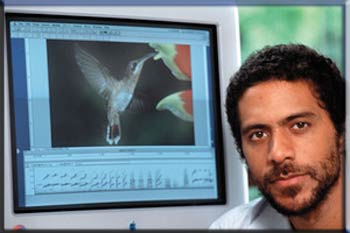
Dr. Erich Jarvis, of Duke University
Regarding this subject, two evolutionary scenarios are put forward. The first states that all birds come from a common ancestor with the necessary brain structure for imitating sounds but that somehow, only certain species developed the ability. The other species were unsuccessful in this respect and lost these skills over time. However, this scenario is not given credit, not even by many evolutionists! According to celebrated neurobiologist Erich Jarvis, it seems extremely unlikely that this trait could be gained or lost more than once in both birds and mammals.28If this kind of undeveloped brain structure exists, asks Jarvis, then why is it not present in reptiles and dinosaurs as well?.29
Evolutionists put forward a second scenario: that in the brains of these three birds, these learning structures each evolved independently of one another. This claim is not only scientifically unfounded, but also cannot answer the most basic questions: How did this skill come about in birds? How is it passed on from generation to generation? And how was the necessary physiological structure for this skill formed? Of course, evolutionists cannot produce a tenable explanation for how this came about in even one of these species. Thus, it is unreasonable for them to claim that the three different bird species have evolved independently. This chain of events cannot be explained by evolution, and could not possibly be realized coincidentally in three different processes in three different living creatures. That is like saying that blind coincidences resulted in successful outcomes—on three different occasions.

Research conducted by Erich Jarvis concluded that the concept of different stages of evolution is invalid.
Facts that science has proven also show how evolutionists lack solutions on this subject. Erich Jarvis expressed the situation in which he found himself, in the light of scientific findings:
… Birds challenge all of us to rethink outmoded concepts of evolution… Throughout our education, we have this concept of linear evolution instilled in us. We're told that … vertebrates evolved from some worm-like creature to fish, amphibians, reptiles, birds, mammals, and so forth, and that living vertebrates represent these stages in both body plan and brain intelligence. And once there were mammals, they evolved to primates, then humans, being last at the top of the hierarchy. But this concept of lower and higher in the vertebrate lineage is just completely false.30
The evolutionary tree on which the evolutionists rely is a strained series of links between different animal species. This tree, based on anatomical similarities among animals, has no real scientific foundation and, as an inevitable result, is full of contradictions. One example is exemplified by those birds that imitate sounds. According to the family tree theory, three living species belonging to three very different branches share one highly complex characteristic—in vocal learning, the same seven areas of the brain are activated in all three. As has been shown, similarities among animals are no evidence of evolution. Attempts to claim otherwise are no more than biased interpretation in the name of science.
 Parrots, songbirds and hummingbirds, the three species of bird that have the ability to mimic songs, are far apart from each other, according to the evolutionists' imaginary family relationships. This invalidates the evolutionary scenario, which claims that these birds independently acquired the necessary characteristics for vocal learning. However, it is irrational to imagine that even one species of bird, let alone three, could acquire such complex skills through coincidence. Parrots, songbirds and hummingbirds, the three species of bird that have the ability to mimic songs, are far apart from each other, according to the evolutionists' imaginary family relationships. This invalidates the evolutionary scenario, which claims that these birds independently acquired the necessary characteristics for vocal learning. However, it is irrational to imagine that even one species of bird, let alone three, could acquire such complex skills through coincidence.

"Have they not looked at the birds above them, with wings outspread and folded back? Nothing holds them up but the All-Merciful. He sees all things." (Qur'an, 67:19)
"That is God, your Lord. There is no god but Him, the Creator of everything. So worship Him. He is responsible for everything." (Qur'an, 6:102)
To Prove that Animals Are Descended from a Single Ancestor, Then You Should Produce a Mechanism, but There Is None
If you claim that animals are descended from a common ancestor, it's not enough to use the similarities between animals as proof. It would be more apt to show a mechanism, but no such mechanism has yet been put forward. For example, which mechanisms transformed the forelimb of a mouse or a shrew-like animal, imagined ancestors of bats, into a bat's wing? Similarly, we can ask what mechanism caused the hind limbs of a land animal to turn into the fins of a whale? For this to happen, according to evolutionary theory, natural selection and mutation are required. However, these two mechanisms make sense only if all intermediate phases in the evolutionary process are of some advantage to the species. If the incomplete forms of the said organs afford the animal no benefit, they are a disadvantage and constitute a handicap for the animal in question. Therefore, there is no natural mechanism for developing the complex organs of animals or for producing genetic information that corresponds to them.

SIMILARITIES BETWEEN LIVING CREATURES DO NOT PROVE THAT THEY COME FROM A
COMMON ANCESTOR
Evolutionists frequently point to similarities between living creatures as evidence to support their claims. For example, the bones in a human arm, a whale's fin and a bat's wing have similar structure. This, according to evolutionists, proves that the animals in question evolved from one single ancestor. However, it is mistaken to think in this way. Actually, this similarity is evidence that all living creatures have been designed according to a plan. From what we have observed in nature, it is evident that a Creator has formed all life within the scope of a similar plan, and fashioned all living creatures in accordance with their needs. When we examine the scientific evidence, the "common design" explanation emerges as the correct one.
If Several Animals Share Similar Characteristics, They Cannot Be Claimed to Have a Common Ancestor
The organs of many creatures resemble those of other animals, but the evolutionists cannot claim all are derived from one common ancestor. For example, the eyes of an octopus are very much like yours, but according to the evolutionists, these similar structures are not derived from a common root (that is to say homologous). Flies and birds both have wings, but again, these cannot be described as homologous. The evolutionists cannot claim an evolutionary relationship between these animals, despite their great similarities, because in the so-called evolutionary trees drawn up on the basis of fossil records and morphology, these animals are far apart from one another. For this reason, evolutionists describe these structures not as homologous but as "analogous"—that is, similar in spite of not having a common root. However, if some similar structures can be analogous, why not all? So far, evolutionists have not provided a tenable answer to this question.
They try to get around this by producing not an answer, but an imaginary concept they call “parallel evolution.” Parallel evolution is attributed to animals and organs that seem to have acquired similar characteristics over time, but which have no evolutionary relationship to one another. For example, let’s take the octopus once more. In spite of being an invertebrate—and therefore, according to the evolutionists, a primitive creature—is as intelligent as a dog, a highly developed mammal. In this case, evolutionists claim that an “intelligence” factor has developed separately in each species, an imaginary phenomenon they describe as “parallel evolution.” But since the octopus is a primitive creature in terms of evolution, it should be a creature of very low intelligence.
Another example is the ability to fly. Insects, birds, extinct reptiles, and even certain living mammals have wings; which is to say, flight has evolved in at least four different classifications of animals. According to evolution theory, why should all of these groups, on completely different imaginary evolutionary paths, have the same outcome? Is it possible for these completely separate groups to develop the same organic structure through an accidental evolutionary process? Why would coincidences follow the same common design in each case? This illustrates the folly of explaining away all these questions by mere coincidence: The common design in these creatures can be explained only by the existence of a common Designer, that is to say, through God’s creation.
Molecular Evidence Disproves the Claim that a Common Ancestor Can Explain Similarities
Regarding similar structures, the most important evidence to disprove the claims of evolutionary theory comes from molecular biology.
Before the genetic coding structure of DNA was discovered, the claim that similar organs “evolved” from a common ancestor was presented as plausible by evolutionists. As more knowledge was gained of genetics, however, scientists discovered the genetic code for similar organs, and it emerged that usually these genes were markedly different. This discovery dealt the common-ancestor assertion a deadly blow.
One fact that emerged in regard to this discovery was the five-fingered (or pentadactyl) hand structure encountered in all land-living vertebrates.
The hands and feet of a frog, lizard, squirrel and a monkey all have five digits. Even the bone structure of birds and bats conforms to this basic design. Evolutionists used the pentadactyl structure as evidence for the claim that all these various species derived from a common ancestor.
Today, however, even the evolutionists have accepted that pentadactyl anatomy occurs in species of different groups, between which no evolutionary link can be established. In two separate articles published in 1991 and 1996, evolutionary biologist M. Coates points out that the pentadactyl phenomenon appears independently in both the anthracosaurs and the amphibians. 31This finding indicates that the pentadactyl phenomenon does not constitute proof of a common ancestor.
 Nowadays, even evolutionists admit that the pentadactyl characteristic occurs in different groups that share no evolutionary relationship. The limbs of a frog, lizard, squirrel and a monkey are all pentadactyl. Even the bone structures of birds and bats conform to this basic design. As has been seen, similarities between living creatures constitute evidence not of evolution, but of creation by common design. Nowadays, even evolutionists admit that the pentadactyl characteristic occurs in different groups that share no evolutionary relationship. The limbs of a frog, lizard, squirrel and a monkey are all pentadactyl. Even the bone structures of birds and bats conform to this basic design. As has been seen, similarities between living creatures constitute evidence not of evolution, but of creation by common design.
But the essential blow to this evolutionary claim comes from molecular biology. The "pentadactyl homology" hypothesis, long defended in evolutionary publications, collapsed with the discovery that different genes controlled the digit structure in different creatures displaying the pentadactyl structure! As evolutionary biologist William Fix explains;
The older textbooks on evolution make much of the idea of homology, pointing out the obvious resemblances between the skeletons of the limbs of different animals. Thus the "pentadactyl" limb pattern is found in the arm of a man, the wing of a bird, and flipper of a whale—and this is held to indicate their common origin. Now if these various structures were transmitted by the same gene couples, varied from time to time by mutations and acted upon by environmental selection, the theory would make good sense. Unfortunately this is not the case. Homologous organs are now known to be produced by totally different gene complexes in the different species. The concept of homology in terms of similar genes handed on from a common ancestor has broken down... 32
2. 2. Birds that Display Vocal Learning Show Similarity with Humans in Terms of the Genes Determining Brain Structures
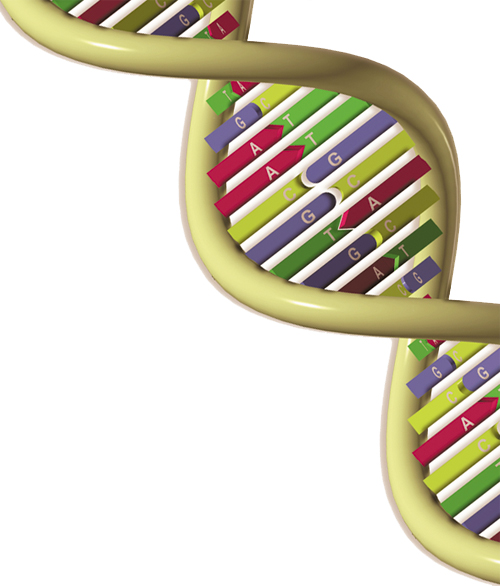
Evolutionists claim that genetic similarities derive from evolutionary development. However, when “biochemical similarities” are considered as a whole, they are seen to refute the alleged family tree that constitutes the backbone of claims supporting the theory of evolution. (For detailed information, see The Secrets of DNA, by Harun Yahya.)
That molecular verification does not support evolutionary theory is expressed in an article by Elizabeth Pennisi, “Is It Time to Uproot the Tree of Life?” published in Science magazine in 1999. Pennisi states that the genetic analyses and comparisons made by the Darwinist biologists to illustrate the “evolutionary tree” give quite the opposite result, and that “the new data casts a shadow over the evolutionary picture”:
A year ago, biologists looking over newly sequenced genomes from more than a dozen microorganisms thought these data might support the accepted plot lines of life's early history. But what they saw confounded them. Comparisons of the genomes then available not only didn't clarify the picture of how life's major groupings evolved, they confused it. And now, with an additional eight microbial sequences in hand, the situation has gotten even more confusing… Many evolutionary biologists had thought they could roughly see the beginnings of life's three kingdoms… When full DNA sequences opened the way to comparing other kinds of genes, researchers expected that they would simply add detail to this tree. But “nothing could be further from the truth,” says Claire Fraser, head of The Institute for Genomic Research (TIGR) in Rockville, Maryland.
Instead, the comparisons have yielded many versions of the tree of life….33
In summary, on examination of living species at a molecular level, the homology hypotheses of evolutionary theory collapse, one by one. Jonathan Wells, an American molecular biologist, summarizes the situation in his book published in 2000:
Inconsistencies among trees based on different molecules, and the bizarre trees that result from some molecular analyses, have now plunged phylogeny into a crisis.34
In recent years, research conducted on the genetic structure of birds has also turned upside-down the evolutionists' theory of genetic similarity. To understand vocal learning in birds, Erich Jarvis and his team of colleagues examined the brains of 12 of the 30 or more species of hummingbird found in Brazil, in the movement of a gene that is activated when the birds sing. Their research established that a gene called "zenk" is active in seven different centers of the brain. It emerged that this characteristic is present not just in hummingbirds, but also in parrots and songbirds.35
In light of this information, scientists began making further comparisons between the brains of humans and birds. But the evolutionists—who wanted to present genetic similarities between humans and chimpanzees as evidence of evolution—felt uncomfortable about conducting studies using methods that produced evidence contrary to their position. The comparisons made on this subject to date are biased opinions supporting the fable that humans and monkeys have a common ancestor. When a genetic similarity was established between birds and humans, the evidence produced to date by the evolutionists was invalidated once again. Erich Jarvis, himself an evolutionist, expressed how this dogmatic approach, resulting from an evolutionist standpoint and which posed an obstacle to real observation, gave him great difficulty in his research:
The difference… between humans and songbirds, besides the general brain organization of mammals and birds, is that humans have more of what the birds have… But in order to explain this hypothesis of parallels between vocal imitation structures in the bird brain and language structures in human brains, I first have to get around this hundred-year-old dogma that their brains are so very different. 36
The reason behind the evolutionists' discomfort was that the possibility of a common gene in hummingbirds and humans could contradict the concept of homology and thus constitute evidence against evolution. Accordingly, they were not keen to see information on this subject emerge. Nevertheless, Jarvis explains that research in this field could be illuminating:
Such genetic experiments, even with an animal as seemingly distant from humans as the hummingbird, could help us understand human language… We're finding with these DNA chips that somewhere between 70 and 80 percent of the genes that we get from the songbird brain have a homologous counterpart in humans and mammals in general."37
The Darwinists have done no more with evolutionary theory than present information they believe suits their purposes, using the support of certain organs of the media as evidence of evolution. On the subject of genetic similarities, as in every field, they manipulate deliberately, giving misleading information and suppressing information they see as contrary to their purposes. But upon impartial evaluation of research conducted at a molecular level, the truth is evident: No “organism” is the ancestor of any other, nor is any more “primitive” or “developed” than the other. God has created all living creatures individually and perfectly, together with perfect systems that differentiate them from one another.
God makes this known fact in the Qur’an:
He is God—the Creator, the Maker, the Giver of Form. To Him belong the Most Beautiful Names. Everything in the heavens and Earth glorifies Him. He is the Almighty, the All-Wise. (Qur'an, 59:24)

"We subjected the mountains to glorify with him in the evening and at sunrise. And also the birds, flocking together, all of them turned to Him." (Qur'an, 38:18-19)
3. Birds with Vocal Learning Display a Talent Superior to Monkeys:
Many evolutionists are known to be working toward establishing links between chimpanzees and humans, to present as evidence of a relationship between the two species. However, research conducted on chimpanzees' linguistic and thinking skills shows that they use a very simple form of sign language. Thus, evolutionists' attempts to show that monkeys are the animals most well-adapted for learning to speak have had disappointing results. This shows, once again, how no such relationship exists between humans and chimpanzees like the one that evolutionists imagine.

Despite the time and effort spent in trying to make chimpanzees talk, results have remained inconclusive. The vocalizations that chimpanzees produce are extremely primitive when compared with the skilled mimicry of parrots. Nevertheless, no one mentions any evolutionary ties between humans and parrots. This is only one example of evolutionists' biased opinions.
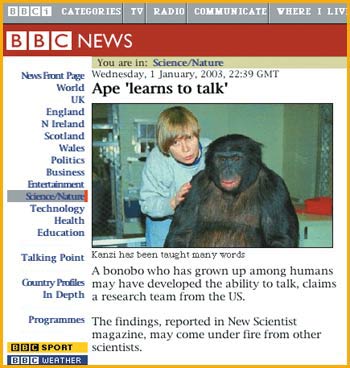
The press claimed that a chimpanzee named Kanzi had been taught to "speak." However, it emerged that the chimpanzee produced vocalizations that had nothing to do with the skill of speaking.
Attempts to get chimpanzees to talk proved inconclusive, in spite of the time and effort invested, showing how wrong the approach of the evolutionists was. Nevertheless, the press presented these studies in a distorted way. One of the most recent examples of this was a piece entitled “Can Chimpanzees Talk?” in the science and technology supplement of Cumhuriyet newspaper, 25 January, 2003. Based on a news item published on BBC’s online site, this article claimed that a chimpanzee called Kanzi had been taught to speak. However, the vocalizations that the chimpanzee supposedly uttered had nothing to do with the skill of “speaking.”
Jared Taglialatela and Sue Savage-Rumbaugh, two evolutionist researchers, claimed that Kanzi produced different vocalizations in response to certain behavior and objects, and that although the chimp used these vocalizations—meaning “banana,” “grapes,” “fruit juice” and “yes”—in different contexts, he did not substitute the word “yes” under any circumstances. These same researchers claimed that the chimpanzee had learned to do this by himself.
The fact is that chimpanzees cannot speak. A human’s ability to speak is not based on making sounds; it comprises exceptional characteristics such as naming concepts and forming grammatically correct sentences, which no animal can master and whose source no linguist can explain. Evidently, the “words” that Kanzi used repeatedly cannot be taken as speech. However, in the same news item, the critics said that if the vocalizations were to be termed as language, syntax was also a consideration.

This point brings up a contradiction on the subject of evolutionary theory, since in fact, parrots are at least as skilled as Kanzi in terms of vocalization and mimicry. Furthermore, the vocalizations that chimpanzees produce are extremely basic when compared with the skills of parrots. However, no newspaper has made any mention of an evolutionary relationship between humans and parrots.
Objective opinions of scientists working on the subject for many years expose the claims seen in Kanzi’s example as pure fantasy. Philip Lieberman, the famous linguist, emphasizes that attempts to teach language to chimps are doomed to failure:
Although animal trainers and investigators since the seventeenth century have tried to teach chimpanzees to talk, no chimpanzee has ever managed it. A chimpanzee's sound-producing anatomy is simply too different from that of humans. Chimpanzees might be able to produce a muffled approximation of human speech—if their brains could plan and execute the necessary articulate maneuvers. But to do this, they would have to have our brains, which they obviously do not. 38
As noted, some birds' ability to imitate sounds renders the "evolutionary tree," one of the evolutionists' most important claims, meaningless from another angle. The fact is, a parrot bears no physical resemblance to a human; yet if it has an ability such as speech requiring a high level of intelligence. This does not conform to any evolutionary model. According to the evolutionists, chimpanzees are just a step or two below humans on the said evolutionary tree. But the high level of consciousness and ability to mimic sounds that talking birds demonstrate, disprove the evolutionists' claims.
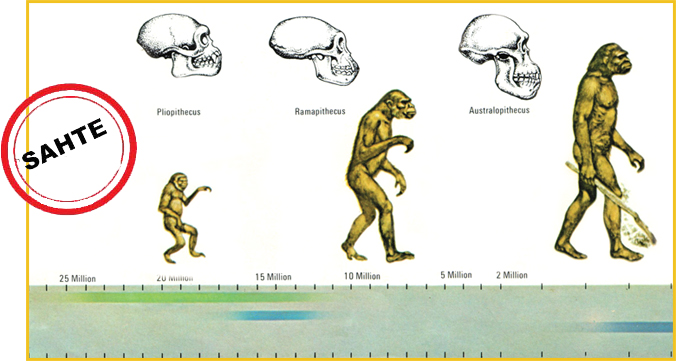
FALSE
According to evolutionists, chimpanzees are just one step below humans in the so-called evolutionary tree. Nevertheless, the fact that a parrot, bearing no physical resemblance to a human, has the ability to speak—which requires such a high level of intelligence—does not conform to any evolutionary model.

1-Syrinx (the voice box of a bird)
2-Larynx (the voice box of a human)
Defenders of evolution are well aware that from the perspective of their theories, talking birds present a great difficulty. Another troublesome aspect for the evolutionists is related to the root of intelligence in birds. If birds, as evolution suggests, are less developed than the primates, then how have they, in spite of their tiny brains, suddenly managed to acquire this talent that primates—above them in the imaginary evolutionary tree—do not yet have? The Mynah bird, a member of the crow family, can also imitate human speech, but primates cannot. When evolutionists try to provide an explanation for this, they attribute the primate's inability to speak to its different laryngeal structures. However, this explanation is by no means adequate. Birds' laryngeal structures certainly do not resemble ours, but thanks to the ability God has given them, they can imitate human speech with ease. W. H. Thorpe, a Cambridge University zoologist and known authority on the subject, invalidates this claim of the evolutionists:
"How is it that an animal with this can talk?" he would say: "It is utterly impossible" 39
As we noted, certain birds' God-given talent is one of the important refutations of evolutionists' explanations. However different these birds' laryngeal structures may be, God has created them with an ability to speak in a way that fills us with admiration. It should not be forgotten that our Lord is the incomparable Creator; and it is by His will that "He has given speech to everything."(Qur'an, 41:21)

"Is He Who creates like him who does not create? So will you not pay heed? If you tried to number God's blessings, you could never count them." (Qur'an, 16:17-18)
4. Birds that Possess Vocal Learning Display More Advanced Intelligence than Monkeys
As already pointed out, evolutionists have come up with the scenario that monkeys and humans share a common ancestor. But this preconception, unscientific and full of contradictions, further invalidates the so-called evolutionary tree. Because evolutionists begin with the hypothesis that the chimpanzee is man’s closest relative, they also try to establish similarities between the behavior of monkeys and humans. Doing so, they try to give the impression that the chimpanzee is the closest to man in terms of intelligence. However, several creatures disprove the assertion that the chimpanzee is the next most intelligent being, after man.
The aforementioned Professor Irene Pepperberg, trainer of Alex as well as other an African Grey parrot by the name of “Griffin,” proves this. It was long believed that playing with objects and speaking were behaviors found only in humans. But Pepperberg's observations disprove this:
Human children start combining their labels at about 22 months… So, they start not just identifying”cookie” and “milk,” but will say “want milk” or “want more cookie.”
And they also tend to develop this combinatorial behaviour at the same time as they start doing physical combinations of their toys. So, they will start stacking cups in serried sizes, and things like that. 40
Parrots' ability to make connections between events and sounds was the subject of Pepperberg's speech at a meeting at the American Association for the Advancement of Science:
The simultaneous emergence of both vocal and physical combinatorial behaviours was always thought to be a purely primate trait, derived from primate brain area. The fact that we are finding this in animals so far removed from primates is exciting. 41
|
"God created every animal from water. Some of them go on their bellies, some of them on two legs, and some on four. God creates whatever He wills. God has power over all things." (Qur'an, 24:45)
|
Again, a characteristic that evolutionists assert is unique to primates also found in parrots—which appear in an entirely different branch of the imaginary evolutionary tree—constitutes a major evolutionary impasse. That parrots and certain other birds have such a complex brain capacity invalidates the evolutionists’ entire scenario. Therefore, their assertion that a small brain capacity develops into a large one is not applicable, which also invalidates the claim that primates are the ancestors of humans.
Furthermore, nature provides many more examples of “lesser” species exhibiting intelligent behavior. Beavers, for example, build a dam of ideal hydrodynamic size to stem the current; termites can build huge nests with special ventilation channels; and honeybees can build combs based on apparent knowledge of geometry and mathematics. Although they do perform such complex behaviors, all these creatures—especially the insects—have very small brains.
Without any guidance, a crow named Betty, being studied in the laboratory of Oxford University, bent a thin metal rod into a shape that she could use as a tool. When she couldn't reach food at the bottom of a container with her beak, the crow bent the end of a piece of wire she found in the laboratory into a hook. Betty understood that the wire, an object she had never seen before, would be useful because of its size and flexibility. She also succeeded in bending the flexible wire in a way that suited her purpose. Scientists pointed out that in spite of her smaller brain, Betty demonstrated a level of intelligence higher than chimpanzees.
http://news.bbc.co.uk/1/hi/sci/tech/2178920.stm
A final example of this miraculous behavior is provided by a crow named Betty, which was studied in the laboratory of Oxford University. Without any guidance, Betty bent a piece of wire she found in the laboratory into a shape that she could use as a tool. When she could not reach food at the bottom of a container with her beak, the crow bent the end of a piece of wire into a hook. With the use of the wire, she was then able to get her food out of the container easily. What amazed the scientists was that Betty understood that something she had seen before only in the mesh of a cage would be useful, thanks to its size and flexibility. She also succeeded in bending the flexible wire in a way that suited her purpose. Wanting to establish whether or not Betty's success was a coincidence, scientists noted that she succeeded nine out of ten times.
Scientists pointed out that despite her small brain, Betty had demonstrated a higher level of intelligence than chimpanzees. The BBC, with its Darwinist prejudices, commented, “Betty is putting our closest cousins to shame.42 In other words, Betty had turned upside down the evolutionists’ accepted ideas on the root of intelligence. Alex Kacelnik, a scientist from Oxford who conducted research on Betty, made this comment:

"He is the Originator of the heavens and the Earth. How could He have a son when He has no wife? He created all things and He has knowledge of all things." (Qur'an, 6:101)
We assume primates will be cleverer because they are closest to us… But this animal (Betty) seems to be on a par at least with any primates we have seen.43
Betty is just one of many birds exhibiting “intelligent” behavior. Many other scientific investigations are being conducted on this subject, making it ever more evident that all interpretations of the intelligence of chimpanzees, and consequent claims of the relationship between man and chimpanzee, are wrong.
Whatever the source of animal behavior, evolutionary claims do not support these characteristics. Many birds’ behavioral patterns are determined from birth by their genetic structures. But if so, we should question who coded such behavioral patterns into the genes of birds? The evolutionists’ response—that behavior is caused by instinct—leaves this question still unanswered, because birds’ behavioral patterns are the inspiration of God and cannot be explained by such vague concepts as “instinct.” The learned behavior seen in a few species of bird creates yet another dilemma for evolutionists, since they cannot say it is due to instinct. The surprising degree of consciousness observed in birds that have vocal learning such as parrots is a manifestation of the inspiration of God.

Evolutionists seeking to establish an evolutionary link between chimpanzees and humans use skull size as a criterion. However, the evolutionist claim that "as the brain developed, its capacity to process information and store it in the memory also increased" is invalid for a variety of reasons. Although a bird's brain is extremely small compared to a human's, birds are able to perform extremely complex operations.
THE EVOLUTIONISTS, WHO TRY TO ESTABLISH A LINK BETWEEEN LIVING BEINGS ACCORDING TO CRANIAL MEASUREMENTS, HAVE ONCE AGAIN SEEN THE ERROR OF THEIR WAYS:
One group of evolutionists claims that skull dimensions can demonstrate that humans and monkeys derive from a common ancestor. They relate humans’ brains being larger than chimpanzees’ to greater intelligence, and claim that over time, cranial dimensions have shown an evolutionary trend. This claim—that as the brain enlarged, its capacity to process information and store it in memory increased as well—is invalid, for a variety of reasons. Just the observations conducted on birds with vocal learning disprove it: Compared with a human’s, a bird’s brain is extremely small. For example, in birds weighing an average of 85 grams, the brain varies from 0.73 to 2.7 grams in weight. A bird's brain differs from a mammal’s in that the complex folds found in mammals’ cerebral cortex are missing, and the cerebral cortex itself is much smaller proportionally. Nevertheless, some birds are able to perform extremely complex operations such as speaking, learning songs, conceptualization and visual memorizing. Accordingly, there is no question of brain development from simple to complex to support evolutionary theory in living creatures.
* http://www.earthlife.net/birds/nerves.html

"He is God. There is no god but Him. Praise be to Him in this world and the Hereafter. Judgment belongs to Him. You will be returned to Him." (Qur'an, 28:70)
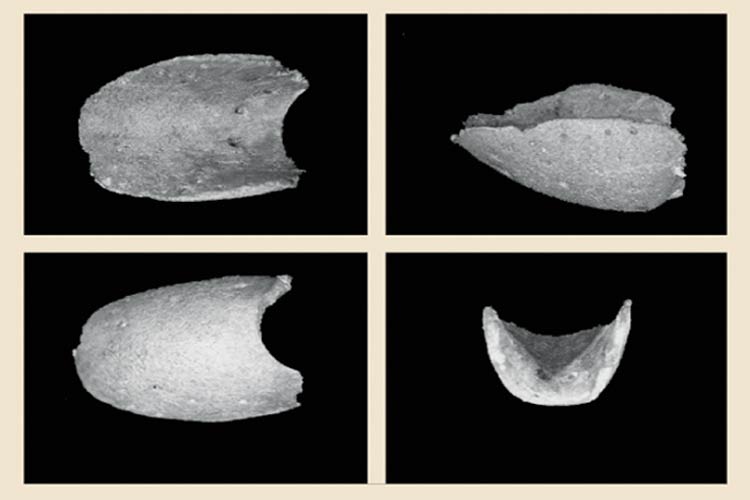
A 65-MILLION-YEAR-OLD FOSSIL OF A PARROT’S JAW IS IDENTICAL TO THE JAW OF THE
CONTEMPORARY PARROT!
One important development to disappoint the evolutionists is the "fossil parrot jaw" found 40 years ago. This fossil, estimated as being 65 million years old, has the same structure as the jaw of a present-day parrot. When this fossil was first unearthed, it was not given the interest it deserved, but has become a current issue, due to investigations conducted by Thomas Stidham on the fossil collection of Berkeley University's Paleontology Museum. His research showed this to be the oldest parrot fossil found to date, and that this parrot lived in the same era as the dinosaurs. According to X-rays taken of the 13 mm fossil, the K-shaped mark on the fossil—the tracks of blood vessel and nerves—is identical to ones on a present-day parrot's beak.
* Thomas A. Stidham, "A lower jaw from a Cretaceous parrot," Nature, No: 396, 5 November 1998, pages 29-30.
|

 1
1 2
2 3
3 4
4



![]()
![]()
![]()
![]()
![]()
![]()
![]()
![]()
![]()
![]()
![]()
![]()
![]()
![]()
![]()
![]()

















